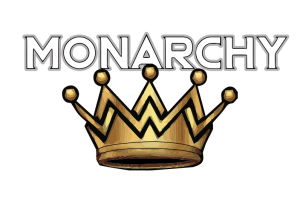Chalk Talk: Light on California girls hockey has never been brighter
 California girls hockey is growing like never before and in places you wouldn’t believe.
California girls hockey is growing like never before and in places you wouldn’t believe.
After 15-plus years searching out young female players and growing this sport for girls at the grassroots level, the Lady Ducks have hit a new threshold of 14 girls teams for the coming season. This lead to recognition at last month’s USA Hockey Annual Congress receiving the Pacific District’s Female Honors Award as a leader in growth, development and promotion of ice hockey for females.
Veteran programs like Lady Ducks or Sharks girls are far reaching as these teams compete around California rinks. Learn to Play-Hockey, Girls Try Hockey Days and USA Hockey American Development Model programs have expanded many existing programs and have helped to spawn new teams at 8U through 14U for the first time. The San Diego Lady Gulls and Santa Barbara Monarchs are just two examples of brand new teams for 2016-17.
Why play girls hockey?
The distance to the nearest girls hockey team/program may be daunting, but we have all seen families bypass their local rink for a “best fit” for their son on a youth team. So maybe girls deserve that same experience.
Having fun, providing challenging development among peers, confidence, team building, locker room experiences and lifelong friendships are all reasons to play sports. A future college experience, the Olympics or National Women’s Hockey League are the stuff of which dreams are made. So why not give your daughter the BEST opportunity to grow her game? Here are a few statistics to help understand the benefits of a female team experience.
On a girls team:
— A female aged 6-12 is significantly (three times) more likely to touch the puck every shift.
— Girls are 4-8 times more likely to receive a pass (depending on age).
— Power play and penalty kill time is increased.
— Girls are far more likely to get a shot on net.
Parents often fear that a serious athlete needs to play with boys to get better. One could argue that maybe training with some boys in clinics or lesson formats help “push” a player, but statistically, many more girls today are heading to the NCAA from female programs compared to 10 years ago (when skilled girls teams were harder to find). Much like the “player-up” myth in youth hockey, playing on a youth/boys team often reduces puck touches, ice time, and positive, engaged shift experiences while learning the game.
Almost all of the last dozen or so Lady Ducks who went on to play Division I hockey did not roster on a youth/boys team after Squirt, and some never played boys hockey.
For example, U.S. Women’s National Team member and Wisconsin junior, Annie Pankowski, St. Lawrence graduate, Jessica Hon, Princeton graduate Alison Pankowski, Yale junior Kara Drexler, Penn State graduate Celine Whitlinger, St. Lawrence sophomores Justine Reyes and Kayla Neilsen and Lindenwood freshman Lilli Marchant, as well as more than two dozen Division III student-athletes currently on women’s college hockey rosters, were on all-girls teams at 10U and beyond.
Forming a girls program
So you want to start a girls team. Keep in mind, it’s not about AAA. If you build it, they will come. It is about growing the game. The Lady Ducks started in 1999 with 28 girls who were looking to join a girls team as college-hockey hopefuls. But that isn’t why we are alive and well today. We took a handful of girls to form Mite, Squirt and Pee Wee house teams. Sometimes, we had a brother or two until the rosters grew into pure girls teams after a season or so.
Since 2003, we have added almost a team every year, proving it can be done with a long-term vision and a little patience.
Kathy McGarrigle is a 26-year veteran middle school teacher, former Division I tennis player and coach, director and head of coaches for the Anaheim Lady Ducks.








